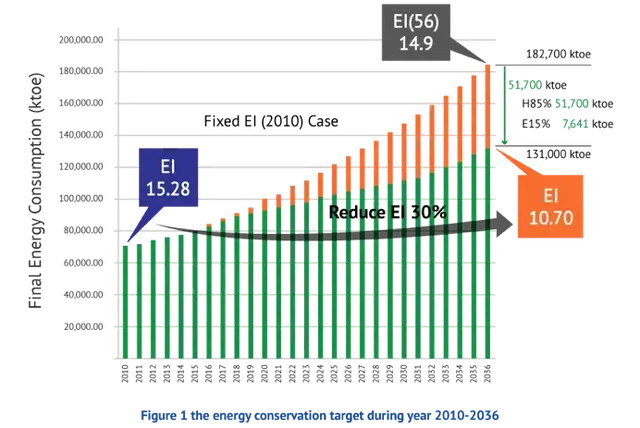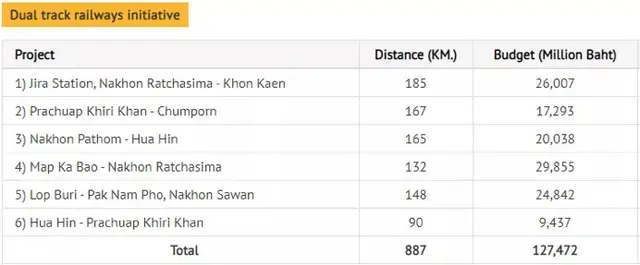砥砺前行,走出疫情:迈向蓬勃、互联和可持续的未来
新加坡和中国牢固的伙伴关系可追溯到四十年前。当年,新加坡参与并支持了中国的改革开放工作。明天,我和中国国务院副总理韩正将共同主持第17届新中双边合作联合委员会(Joint Council for Bilateral Cooperation,简称 JCBC)会议。这是两国最高级别的双边合作平台。JCBC首次于2004年召开会议,这些年来双方得以通过此平台全面探讨两国广泛的合作关系和确认新的合作领域,以加强两国源远流长的双边关系。
这几十年来,新中两国开展了三个政府间合作项目–分别为1994年开发的苏州工业园区、2008年开始建设的天津生态城,以及2015年正式启动的中新(重庆)战略性互联互通示范项目。中新广州知识城则在2018年升级为国家级双边合作项目。这些项目是在新中两国各自发展道路上不同阶段时期推出的,而双边合作性质的不断演变也彰显了两国关系的前瞻性。为了应对2019冠状病毒疾病,新中两国去年把公共卫生列为新的合作领域。冠病疫情也加速了现有结构性变化。因此,在明天举行的JCBC会议中,双方也将会适时地讨论两国如何能越战越勇,并在后疫情时期建构更具韧性的经济和社会,为全球复苏作出贡献。
蓬勃的经济
随着中国步入新发展格局,包括落实其“双循环”战略,新加坡可进一步为中国的经济增长做出贡献。配合全球贸易流动和供应链的重组,新加坡可以加强中国与本区域经济体的联系。连接中国西部和东南亚的中新(重庆)互联互通项目旗下的国际陆海贸易新通道就是一个很好的例子。在这条贸易通道上,我们着重通过数码化,从而促进数据的无缝流通和电子文档的使用,让货物流动更加通畅。这不仅能优化供应链的运作,也有可能加快货物通关、贸易融资、保险和其他相关活动的速度。这方面的前景是乐观的。即便是在冠病疫情的笼罩下,贸易通道在2021年上半年的货运量比2020年同期增长了百分之35。
除了贸易合作,本区域在加强数码连接方面也存有巨大潜力。冠病疫情期间,许多商业和民间活动从线下转到线上,而这样的趋势将会持续。中国作为数码引领者,其数码经济占国内生产总值的三分之一。东南亚也是数码经济发展最快的地区之一,此地区的网络经济规模预计到了2025年将超过3000亿美元。
新中两国的数码合作将让我们的企业受益,并推动亚细安向数码经济一体化迈进。深圳智慧城市等双边合作项目皆可成为采用新科技和政策创新的先锋,为企业和消费者建立可信赖的数码环境。例如,采用区块链解决方案的数码贸易计划将使跨境交易更快速更安全,并降低在两国都有业务的企业的成本,以及在数码经济领域创造新的服务。新加坡也欢迎中国和其他志同道合的伙伴加入数码经济伙伴关系协定,将双边合作扩展到诸边合作的平台。
互联的社会
新加坡和中国都同样有着提升民生生活质量的目标。尽管新中两国土地面积悬殊,社会经济情况也存在差异,两国社会却面对许多共同的挑战,因此双方可以借鉴彼此的经验,互相学习。比如两国都面临人口老化的问题。我们可以在这个议题上扩大合作范围,共同探讨如何更好地照顾我们的年长者,让他们保持活跃、健康。我们也可以加强社会政策和良政方面的交流,探讨如何更欣然接受多元化社会、对世界保持开放,以及维持社会流动性等议题。
两国人民之间的流动是推进两国在各层面互动的关键。这不仅限于两国官员之间的交流,也包括两国的商人、科研人员、学生和社会各阶层人士的往来。冠病疫情迫使各国加强边境管制,以遏制病毒的传播。但是,新加坡正从疫苗接种者旅游通道着手,探讨加快恢复国际客运的航班。即使我们正在对抗奥密克戎毒株,我们仍会继续以安全的方式与主要航空伙伴恢复航空连通性。我们希望能在这方面和中国合作,包括承认双方的数码冠病健康证书。
当我们最终恢复跨境旅游时,新中两国的年轻一代应当是我们优先考虑的一群,以让他们认识新中两国和本区域丰富多元的历史与文化背景,让他们具备更广阔的国际视野。新中两国恢复民间往来,也能加强和全球各国的互联互通。
可持续发展的世界
冠病疫情也提醒各国,我们必须致力于应对气候变化等全球挑战。可持续发展是新加坡和中国,乃至世界各国的当前急务。今年初,新加坡制定了《2030年绿色发展蓝图》,中国也宣布了“1+N”的政策体系以实现2060年的碳中和目标。新中两国能在共同领域上展开合作,例如发展循环经济模式和推动绿色能源的贸易与投资。
另一方面,我们也通过中新天津生态城项目,打造具有能源效率以及气候韧性的城市。我们也正加强合作,共同探讨如何进一步把大自然融入建成环境,并加强对生物多样性的保护。通过在天津生态城试点新方案,并复制推广到其他城市,我们希望从而支持中国实现“双碳”目标。
此外,绿色金融也是新加坡与重庆、广东、上海及苏州等城市合作发展的重点领域之一,新加坡也可以更好地支援中国企业对绿色和转型金融的融资需求。新中两国还能在更多方面展开合作,也能联手和区域伙伴合作,推动可持续发展。例如,我们可以探索绿色金融科技如何能减低环境所遭受的破坏,并鼓励投资者在可持续的资产上注入更大的投资。
总结
新中两国在今年JCBC会议的议程是积极并具前瞻性的。在即将举行的JCBC会议上,我和韩副总理也会联合主持首只在新加坡诞生的大熊猫宝宝名字的揭幕仪式。这只大熊猫宝宝于2021年8月14日出世。它的父母凯凯和嘉嘉,是新加坡与中国在租借协议下于2012年抵新的两只大熊猫。大熊猫宝宝的诞生是件喜事,也象征了新中两国友谊长青。
展望未来,新中两国在建设一个蓬勃、互联和可持续的未来上有着共同利益。我有信心,两国将通过紧密的伙伴关系,继续与时并进,并且保持双方在多方面合作的强劲势头,为两国乃至本区域的人民带来更美好的未来。
作者是新加坡副总理兼经济政策统筹部长王瑞杰
Forging Ahead Through COVID-19 and Beyond: Towards a Vibrant, Connected and Sustainable Future
The strong partnership between Singapore
and China goes back four decades, beginning with our participation in and support of China’s reform and opening-up. Tomorrow, PRC Vice Premier Han Zheng and I will co-chair the 17th Joint Council for Bilateral Cooperation (JCBC), which is the apex bilateral cooperation platform between our two countries. First held in 2004, the JCBC allows both sides to take stock of our wide-ranging cooperation, and identify new areas of collaboration to strengthen our longstanding relations.
Over the decades, Singapore and China embarked on three Government-to-Government projects – Suzhou Industrial Park in 1994, Tianjin Eco-City in2008 and Chongqing Connectivity Initiative in 2015. We also elevated the Guangzhou Knowledge City to a state-level bilateral cooperation project in 2018. These projects were launched at different phases of our respective developmental journeys, and the evolving nature of collaboration exemplify the forward-looking nature of our relationship. In response to COVID-19, Singapore and China added public health as a new area of cooperation last year. The pandemic has also accelerated existing structural shifts. At tomorrow’s JCBC, it is timely to also discuss how our two countries can emerge stronger as economies, societies and as part of the global community.
Vibrant Economies
As China embarks on a new development paradigm, including the dual circulation strategy, Singapore can further contribute to China’s economic growth. With the reconfiguration of global trade flows and supply chains, Singapore can strengthen China’s linkages with economies in the region. A good example is the Chongqing Connectivity Initiative – New International Land-Sea Trade Corridor, which links Western China and Southeast Asia. Our partnership on the trade corridor focuses on how the physical movement of goods can be complemented by digitalisation to promote seamless data flows and paperless documentation. This not only optimises supply chain operations, but can potentially speed up customs clearance, trade financing, insurance, and other related activities. The prospects have been positive, with a reported 35% increase in cargo flows along the corridor in the first half of 2021 as compared to the same period in 2020 despite the ongoing pandemic.
Apart from trade, there is also tremendous potential to strengthen digital connectivity in our region. During the pandemic, businesses and people have shifted their activities online, and this trend is here to stay. China is a global digital leader, with a digital economy that makes up one third of its GDP. In Southeast Asia, we have one of the fastest-growing digital economies, which is projected to grow to more than US$300 billion by 2025.
The digital collaborations between Singapore and China will benefit our companies, and galvanise efforts to integrate ASEAN’s digital economy. Bilateral projects such as the Shenzhen Smart City Initiative can serve as pathfinders for new technological and policy innovations to promote trusted digital environments for businesses and consumers. For example, digital trade initiatives with blockchain solutions, will facilitate faster and more secure cross-border transactions, reduce costs for businesses operating in both jurisdictions, and create new services for the digital economy. Singapore also welcomes interest from China and other like-minded partners in joining the Digital Economy Partnership Agreement, which will extend our cooperation to a plurilateral platform.
Connected Societies
Singapore and China share the same goal to uplift the lives of our peoples. Despite differences in size and socio-economic circumstances, our two societies face many common challenges. We can learn from one another. One such challenge is our ageing population. We can broaden our collaboration to include how we can better care for and enable our seniors to stay active and healthy. We can also revitalise exchanges on social policies and governance, including how we can better embrace diversity, remain open to the world, and keep social mobility alive.
The key to such exchanges – not just between officials, but also between business leaders, scientists, students, and people from different parts of society – is the movement of people. The pandemic has necessitated tight border controls to contain the spread of the virus. But Singapore is exploring greater resumption of air connectivity, starting with Vaccinated Travel Lanes. Even as we tackle the Omicron variant, we will continue to restore air connectivity with key aviation partners in a safe manner. We hope to work with China in this area, including the mutual recognition of digital COVID-19 health certificates.
When cross-border travel eventually resumes, one priority area is the youths in our two countries. We must continue to expose them to the rich historical and cultural contexts of our two countries and the region, and develop in them a more global outlook. By resuming the exchange of people, Singapore and China can work together towards a more connected world.
Sustainable World
COVID-19 is also a reminder that all countries must act on global challenges such as climate change. Sustainable development is a critical priority not just for Singapore and China, but for every nation. Singapore launched the Singapore Green Plan 2030 earlier this year, while China has released a “1+N” policy framework to meet its 2060 carbon neutrality targets. We can work together on common areas – such as developing the circular economy, and promoting green energy trade and investments.
Through the Tianjin Eco-City project, we have been building a city that is resource-efficient and resilient to climate change. We are also strengthening cooperation to further integrate nature with the built environment and deepen biodiversity conservation. By piloting new solutions in Tianjin Eco-City in a way that is scalable to other cities, we can contribute to China’s double carbon goals.
Green finance is one of our priorities in our partnerships with Chongqing, Guangdong, Shanghai, and Suzhou. Singapore can better support the green and transition financing needs of Chinese corporates. There are other areas that both countries can work together, and with partners in the region, to catalyse sustainable development. For example, we can explore how green fintech can help reduce environmental impact and channel investments towards more sustainable assets.
Conclusion
Singapore and China have a progressive and forward-looking agenda for this year’s JCBC. At the upcoming JCBC, Vice Premier Han and I will also jointly unveil the name of the first Giant Panda cub born in Singapore. The cub was born on 14 August 2021 to Kai Kai and Jia Jia – our resident Giant Pandas which arrived in Singapore in 2012 under a loan agreement with China. The birth of the cub is a joyous occasion and a symbol of our friendship.
Looking to the future, Singapore and China have common interests in building a future that is vibrant, connected and sustainable. I am confident that through our close partnership, Singapore and China will be able to keep up with the times and maintain our strong momentum of multi-faceted cooperation, so that peoples in our two countries and the region can have a better future.
This is an op-ed by Deputy Prime Minister and Coordinating Minister for Economic Policies Heng Swee Keat on 28 December 2021, ahead of the 17th Joint Council for Bilateral Cooperation (JCBC).

照片来源:新加坡副总理王瑞杰面簿帖文






















评论